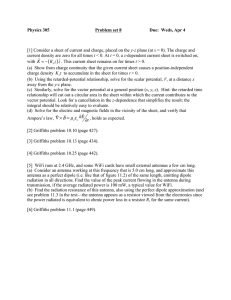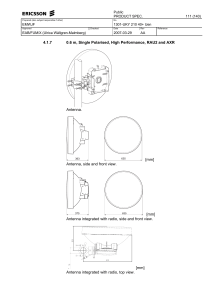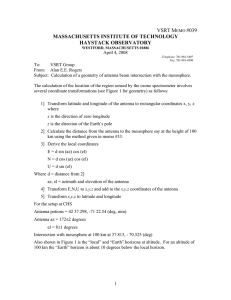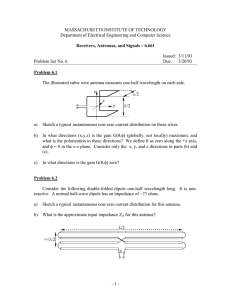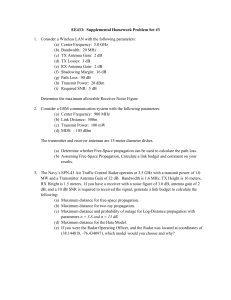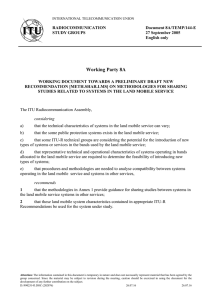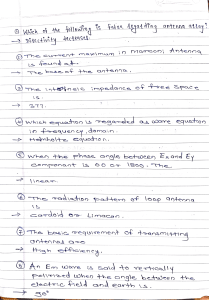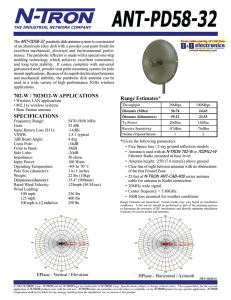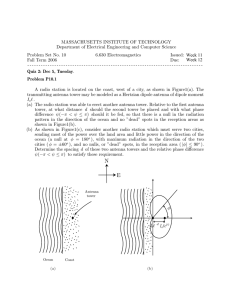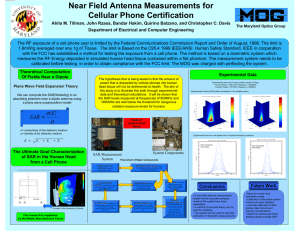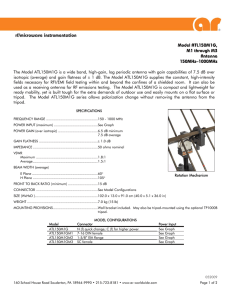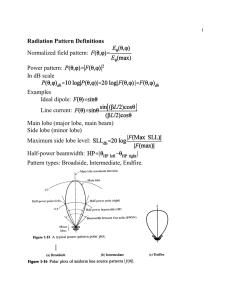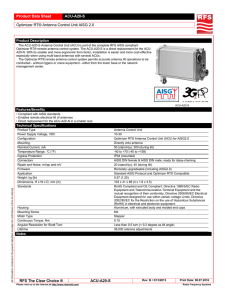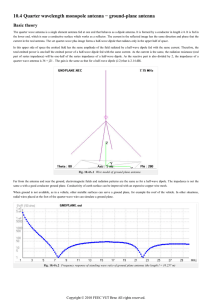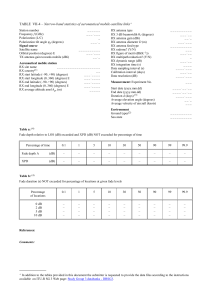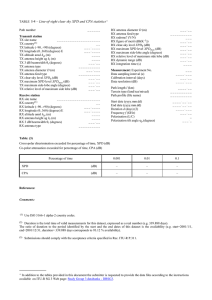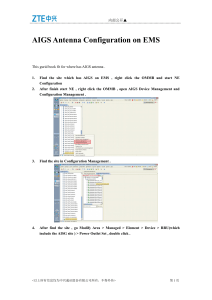Physics 305 Problem set 9 Due: Weds, Apr 11
advertisement
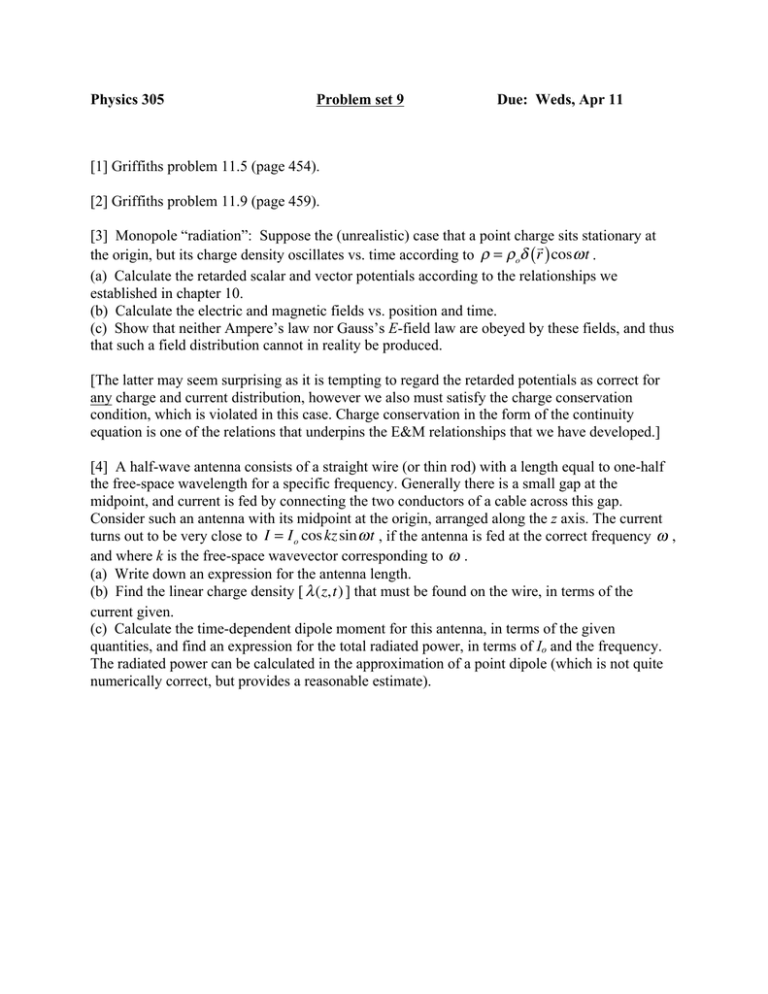
Physics 305 Problem set 9 Due: Weds, Apr 11 [1] Griffiths problem 11.5 (page 454). [2] Griffiths problem 11.9 (page 459). [3] Monopole “radiation”: Suppose the (unrealistic) case that a point charge sits stationary at ! the origin, but its charge density oscillates vs. time according to ! = !o" ( r ) cos ! t . (a) Calculate the retarded scalar and vector potentials according to the relationships we established in chapter 10. (b) Calculate the electric and magnetic fields vs. position and time. (c) Show that neither Ampere’s law nor Gauss’s E-field law are obeyed by these fields, and thus that such a field distribution cannot in reality be produced. [The latter may seem surprising as it is tempting to regard the retarded potentials as correct for any charge and current distribution, however we also must satisfy the charge conservation condition, which is violated in this case. Charge conservation in the form of the continuity equation is one of the relations that underpins the E&M relationships that we have developed.] [4] A half-wave antenna consists of a straight wire (or thin rod) with a length equal to one-half the free-space wavelength for a specific frequency. Generally there is a small gap at the midpoint, and current is fed by connecting the two conductors of a cable across this gap. Consider such an antenna with its midpoint at the origin, arranged along the z axis. The current turns out to be very close to I = I o cos kz sin ! t , if the antenna is fed at the correct frequency ! , and where k is the free-space wavevector corresponding to ! . (a) Write down an expression for the antenna length. (b) Find the linear charge density [ ! (z, t) ] that must be found on the wire, in terms of the current given. (c) Calculate the time-dependent dipole moment for this antenna, in terms of the given quantities, and find an expression for the total radiated power, in terms of Io and the frequency. The radiated power can be calculated in the approximation of a point dipole (which is not quite numerically correct, but provides a reasonable estimate).
